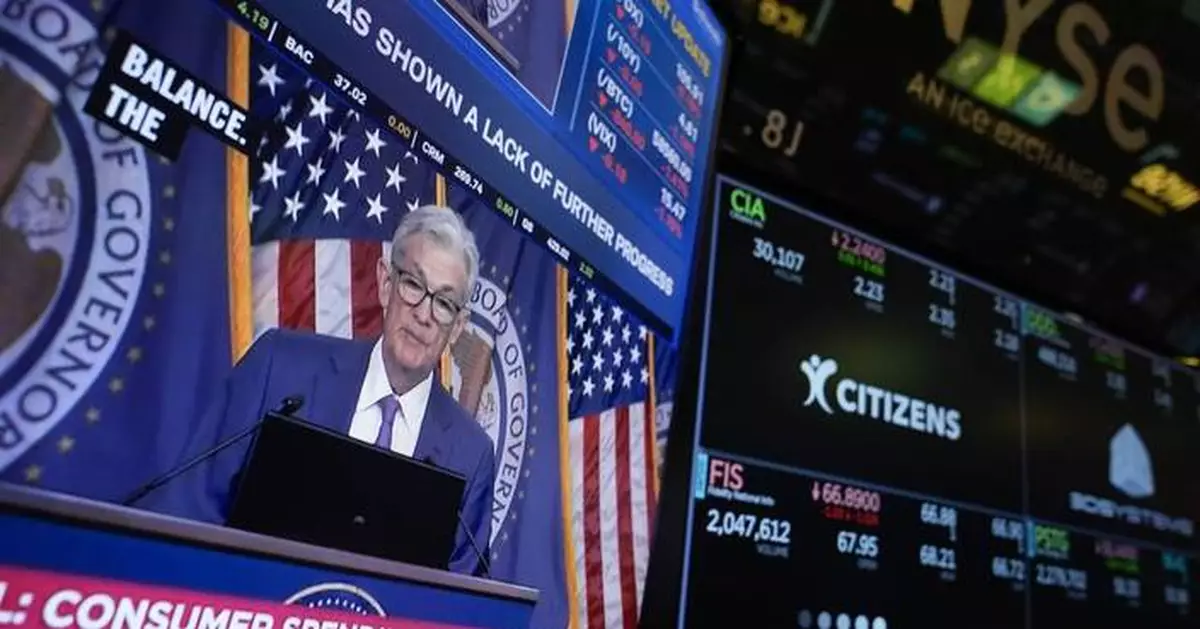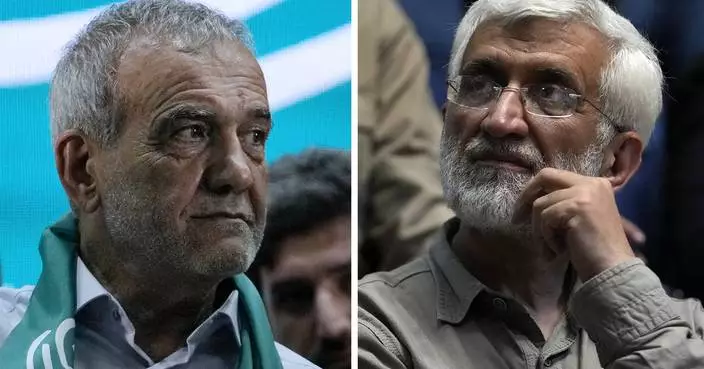WASHINGTON (AP) — Federal Reserve officials at their most recent meeting welcomed signs that inflation is slowing and highlighted data suggesting that the job market and the broader economy could be cooling.
Both trends, if they continued, will likely lead the Fed to cut its benchmark interest rate in the coming months from its 23-year peak of 5.3%.
The minutes of the Fed’s June 11-12 meeting, released Wednesday, showed that the policymakers saw several factors that could further ease inflation in the coming months. These factors included the slower growth of wages, which reduces pressure on companies to raise prices to cover their labor costs.
The policymakers also pointed to several cases of retail chains and other businesses lowering prices and offering discounts, a sign that customers are increasingly resisting higher prices.
Yet the officials also said more evidence was needed to demonstrate that inflation was returning sustainably to the Fed's 2% target. They signaled that they were in no rush to reduce borrowing costs.
The minutes of the Fed’s meetings sometimes provide key details behind the policymakers’ thinking, especially about how their views on interest rates might be evolving. The financial markets are eagerly awaiting more clarity about the likely timetable for the Fed to begin cutting its benchmark rate. Rate cuts by the Fed would likely lead, over time, to lower borrowing costs for mortgages, auto loans and credit cards as well as business borrowing, and could also boost stock prices.
In a noticeable shift from the minutes of previous Fed meetings, the officials cited concerns that a further cooling of the job market might lead to increased layoffs. So far, slowing demand for workers has mostly appeared in the form of fewer job postings.
Their stated concern about a possible rise in layoffs suggests that the central bank's policymakers are starting to more fully consider both their policy goals: Stable prices and maximum employment. That is a shift from the previous two years, when the Fed was focused solely on curbing inflation, which reached a four-decade high in 2022 of 9.1%.
“You’re going to see a greater emphasis on the maximum-employment side of the mandate,” said Derek Tang, an economist at the consulting firm LHMeyer. “Now that inflation is falling ... they can afford to say: 'Look, inflation is not the only thing we have to worry about now. We can also afford to consider the labor market.' "
Though Fed officials generally see the economy as healthy, the minutes showed greater concern about signs of a slowdown. Consumers, particularly lower-income households, are spending somewhat less, companies are advertising fewer job openings and economic growth weakened in the first three months of 2024.
"The vast majority of participants assessed that growth in economic activity appeared to be gradually cooling, and most participants remarked that they viewed” the central bank’s benchmark rate as high enough to slow growth and inflation, the minutes said.
After last month's meeting, Fed officials issued a statement saying that inflation had resumed declining toward their 2% target. But they also scaled back their expectations for rate cuts this year, from three cuts to just one.
At a news conference, though, Chair Jerome Powell downplayed the forecast for a single cut and said either one or two cuts were equally plausible. Four of the 19 policymakers said they envisioned no rate cuts at all this year. The remaining 15 officials were nearly evenly split between one and two cuts.
On Tuesday, financial markets drew encouragement from remarks Powell made during a monetary policy conference in Portugal. Powell said the Fed had made “quite a bit of progress” toward bringing inflation back to 2%.
Consumer price increases were persistently high in the first three months of the year, he noted, but in April and particularly May, inflation resumed the steady decline that had begun in the second half of 2023.
In the latest Fed minutes, many of the officials also noted that lower- and moderate-income households are “encountering increasing strains as they attempted to meet higher living costs.”
“Such strains," the minutes said, “which were evident in rising credit card utilization and delinquency rates as well as motor vehicle loan delinquencies, were a significant concern.”
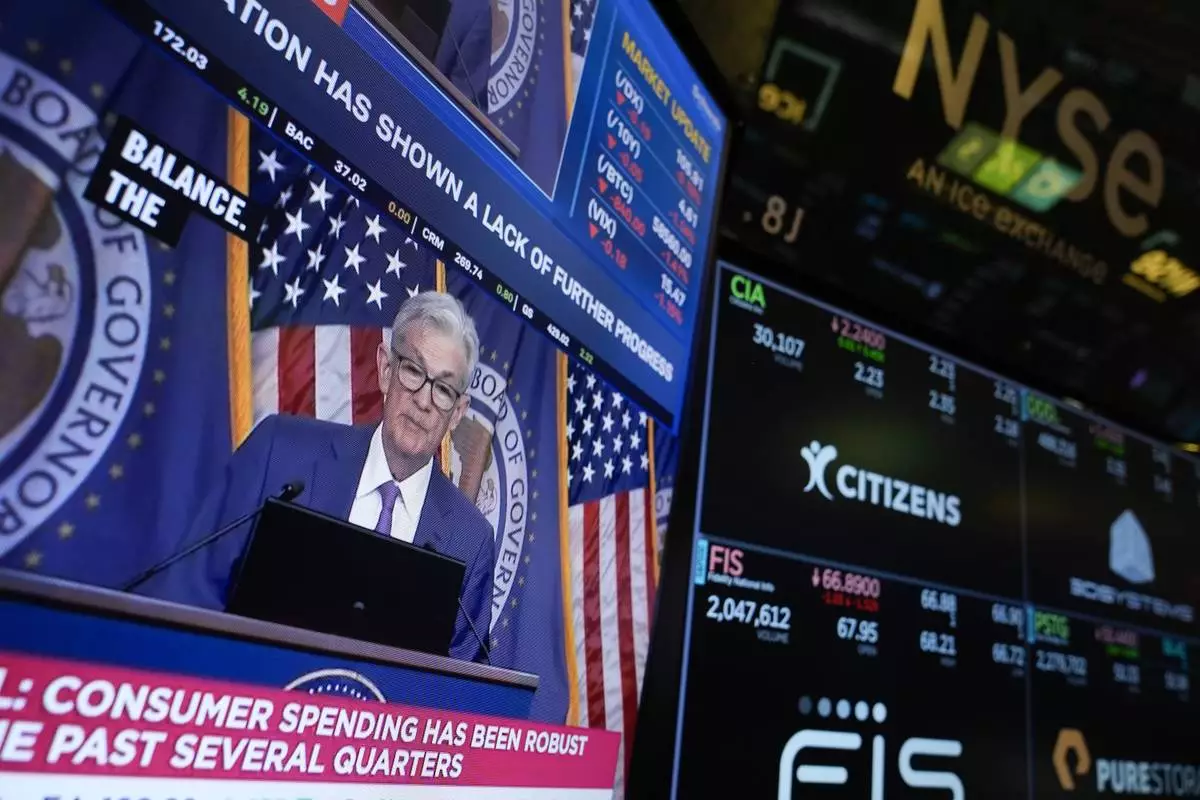
FILE - A news conference with Federal Reserve Chair Jerome Powell appears on a monitor on the floor at the New York Stock Exchange in New York, May 1, 2024. The Federal Reserve delivers the minutes from its most recent interest rate policy meeting on Wednesday, July 3, 2024. (AP Photo/Seth Wenig, File)
MAIDUGURI, Nigeria (AP) — Ten years after declaring a short-lived caliphate in the Nigerian town of Gwoza, just across the border with Cameroon, Islamic extremists deployed female suicide bombers there — their first in the conflict-battered region since 2020 — to sound an alarm: One of the world’s longest wars is still happening.
The first of the three coordinated suicide bombings on June 30 targeted a well-attended wedding. The second was detonated at the burial ceremony for the victims, and the third at a hospital attending to those injured.
At least 32 people in total were killed in the attacks, including nine family members and friends of Mohammed Kehaya, a resident who is now worried about his safety in Borno state, the hotbed of the Islamic militancy that started in 2009.
Nigeria Defense Chief Gen. Chris Musa said the attacks were not a setback for the military but “a sign of desperation," describing them as a one-off by the extremists who once took the world by surprise when they kidnapped hundreds of schoolgirls in Borno in 2014.
“Some individuals would do everything possible for us not to succeed,” Gen. Musa said of the attackers.
However, several security analysts and locals interviewed about the bombings echoed concerns that the attacks must have taken a lot of planning and coordination and portend danger in Borno, where some villages lack security presence.
One of the extremists’ goals could be to distort the narrative that the security situation in the region has normalized, said Vincent Foucher, consulting senior analyst for West Africa at the International Crisis Group.
“It’s a way to show the war goes on,” Foucher said.
No group has claimed responsibility for the bombings, but blame quickly fell on Boko Haram, which since 2009 has launched an insurgency to establish their radical interpretation of Islamic law, or Sharia, in northeastern Nigeria. They have since splintered into different factions, together accounting for the direct deaths of at least 35,000 people and the displacement of more than 2 million amid a humanitarian crisis with people in dire need of foreign aid.
Two days before the bombings, Nigerian military spokesperson Maj. Gen. Edward Buba was meeting with reporters in the capital, Abuja, where he spoke of successes recorded by security forces in their war against extremists. Even while admitting it would “take time and effort to completely destroy” them, he repeated a phrase frequently said among Nigerian officials: “We have greatly degraded the terrorists.”
In Borno, however, the bombings sent shock waves across families and left many wondering whether they should pack what was left of their belongings and flee once again.
“Parents have been calling in to ask if their kids would be safe going back to school,” said Yusuf Ibn Tom, a public school teacher in Maiduguri. “Everyone here is scared.”
At the height of the insurgency in 2014, Boko Haram was considered the world's deadliest terrorist group, killing at least 6,000 people that year alone, according to the Institute for Economics and Peace’s Global Terrorism Index. A lot has changed since then that has made the extremists far less lethal.
The military has pushed them further into the fringes of the Lake Chad axis. The 2021 death of the group’s founding leader, Abubakar Shekau, demoralized some members and made suicide bombing less popular. Clashes between Shekau’s faction and the one linked to the Islamic State group have made the extremists turn against themselves, sometimes shifting the focus of attacks from the military and civilians and even contributing to the defection of thousands who are undergoing a reintegration program.
But what has not changed over the years is the “operational prowess” of the extremists, said Cameron Hudson, an Africa expert at the Center for Strategic and International Studies.
Attacks like the latest one “are rarely one-off incidents and are often part of a wider series,” Hudson said, not ruling out that more might come in the future. “That will give a better indication of the relative strength of the insurgency today as well as the Nigerian military’s ability to respond,” he added.
Asadu reported from Abuja, Nigeria.
Follow AP’s Africa coverage at: https://apnews.com/hub/africa
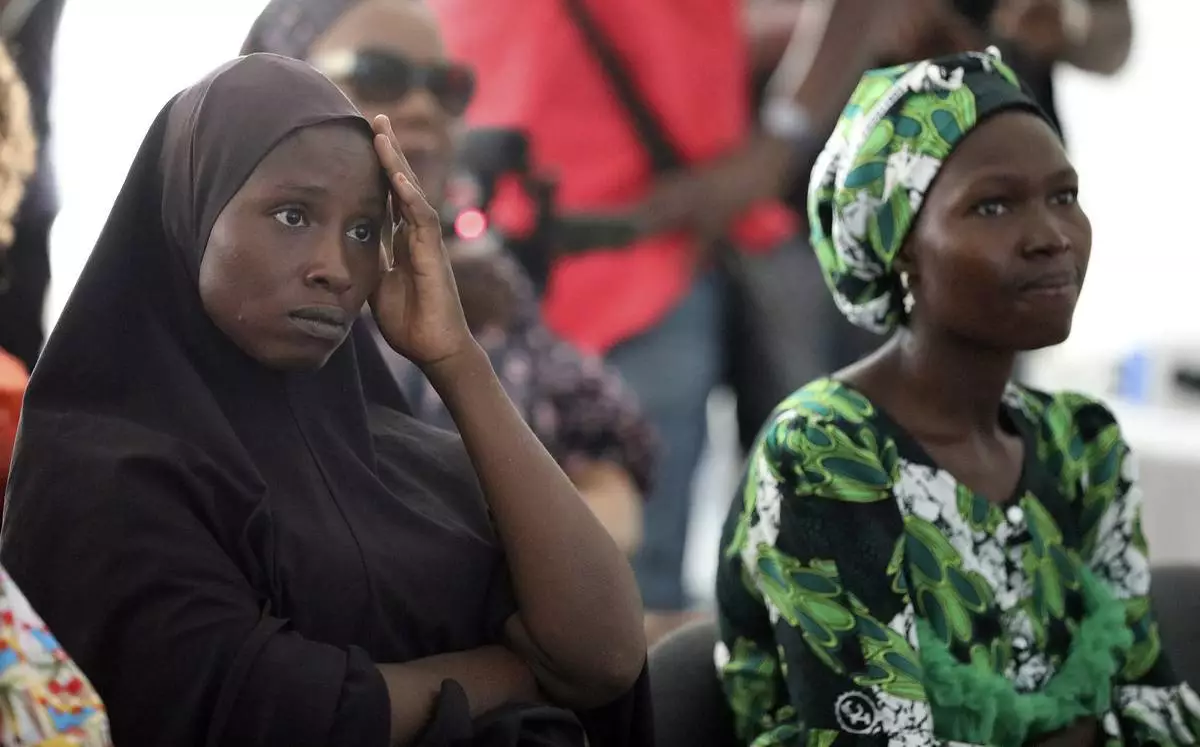
FILE - Parents of Chibok schoolgirls who were kidnapped in 2014 by Islamic extremists, attend a 10th anniversary event of the abduction in Lagos, Nigeria, on April 4, 2024. Recent suicide bombings in northeastern Nigeria have raised questions about the country's claim that it has degraded the Islamic extremists whose insurgency since 2009 has killed more than 35,000 people directly and displaced more than 2 million. (AP Photo/Mansur Ibrahim, File)
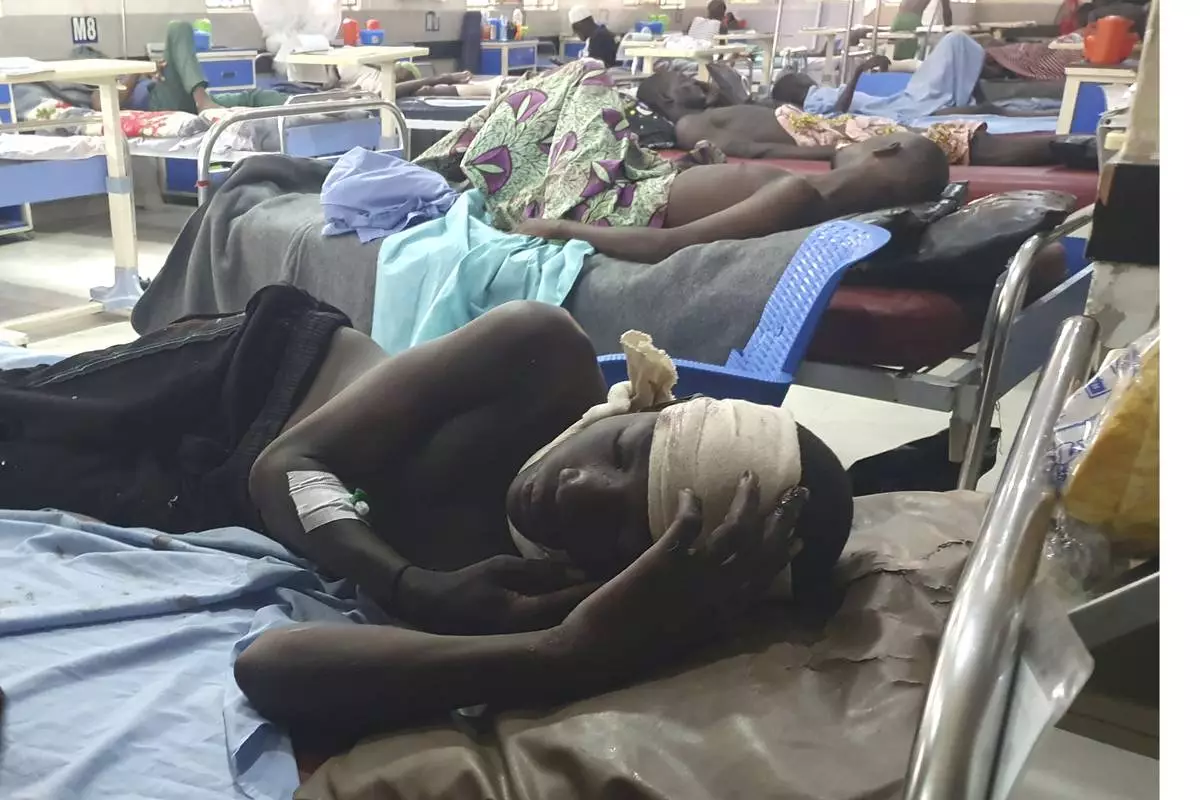
FILE - Injured victims of a suicide bomb attack receive treatment at a hospital in Maiduguri, Nigeria, on June 30, 2024. Recent suicide bombings in northeastern Nigeria have raised questions about the country's claim that it has degraded the Islamic extremists whose insurgency since 2009 has killed more than 35,000 people directly and displaced more than 2 million. (AP Photo/Joshua Omiri, File)
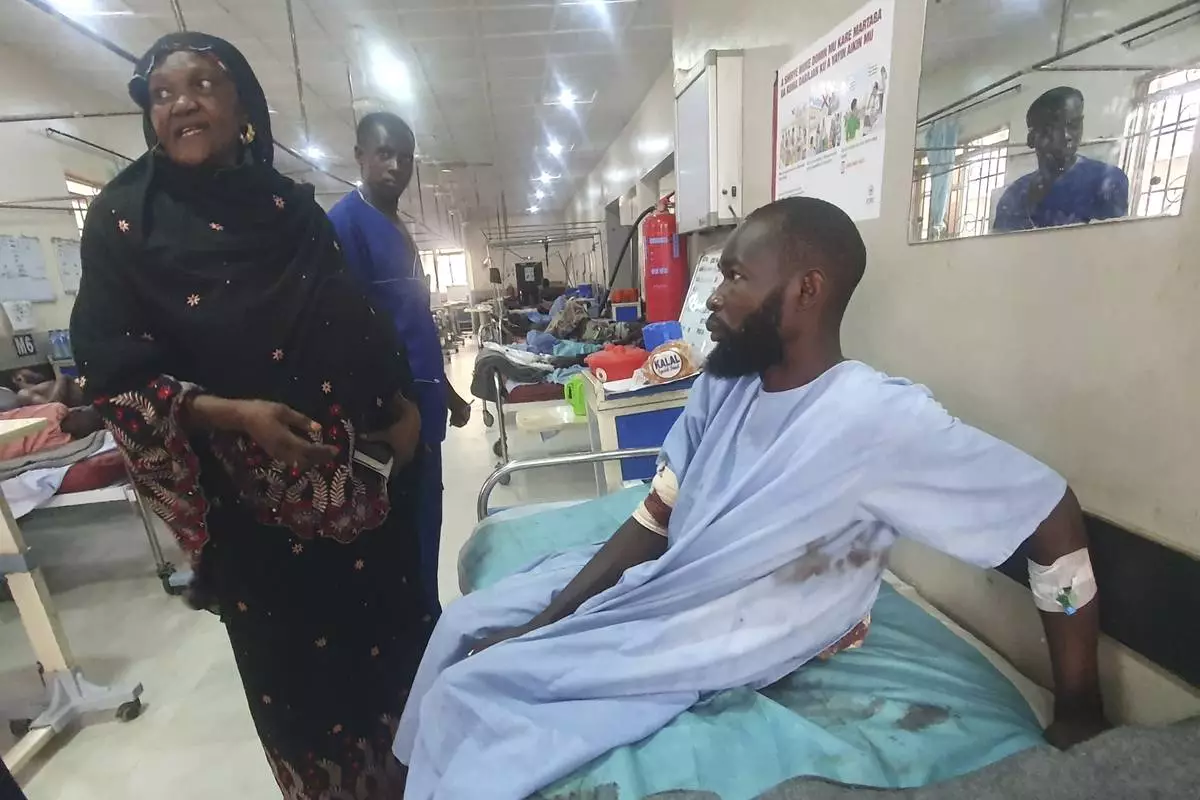
FILE - An injured victim of a suicide bomb attack receives treatment at a hospital in Maiduguri, Nigeria, on June 30, 2024. Recent suicide bombings in northeastern Nigeria have raised questions about the country's claim that it has degraded the Islamic extremists whose insurgency since 2009 has killed more than 35,000 people directly and displaced more than 2 million. (AP Photo/Joshua Omiri, File)



